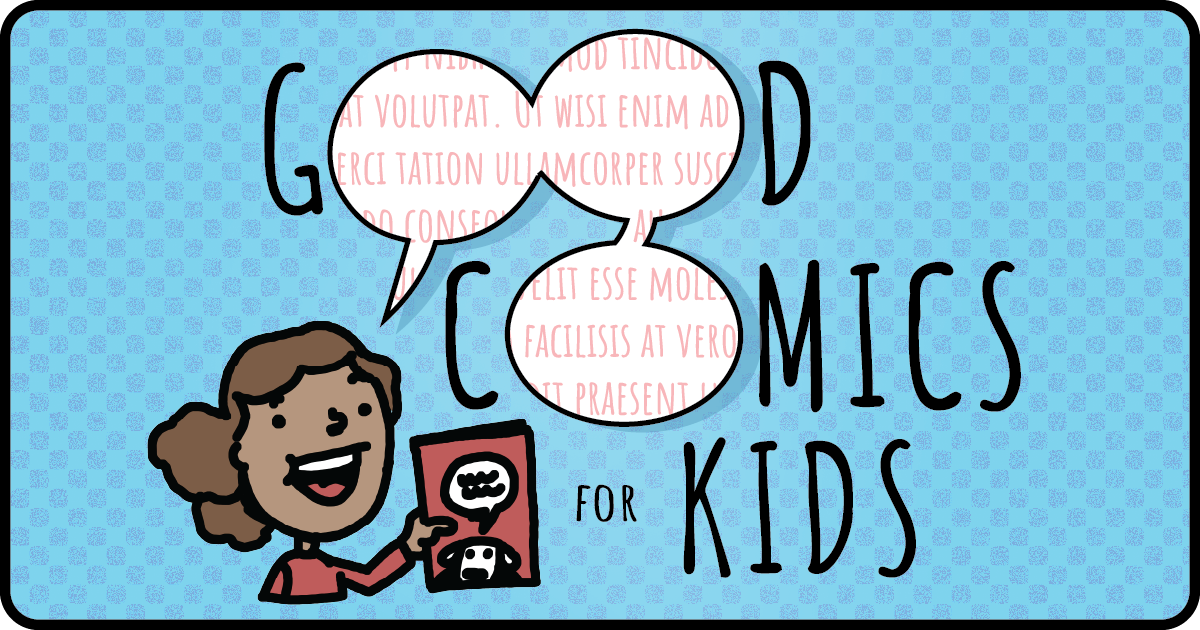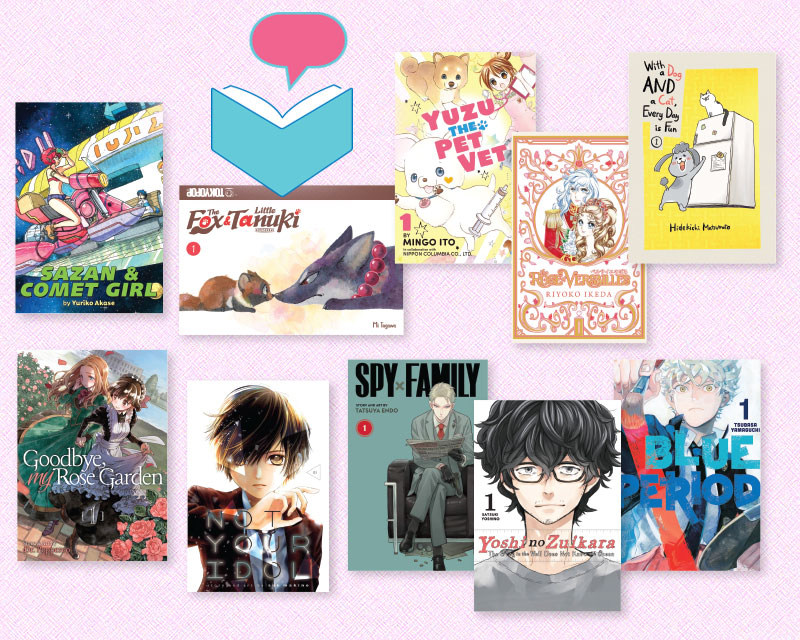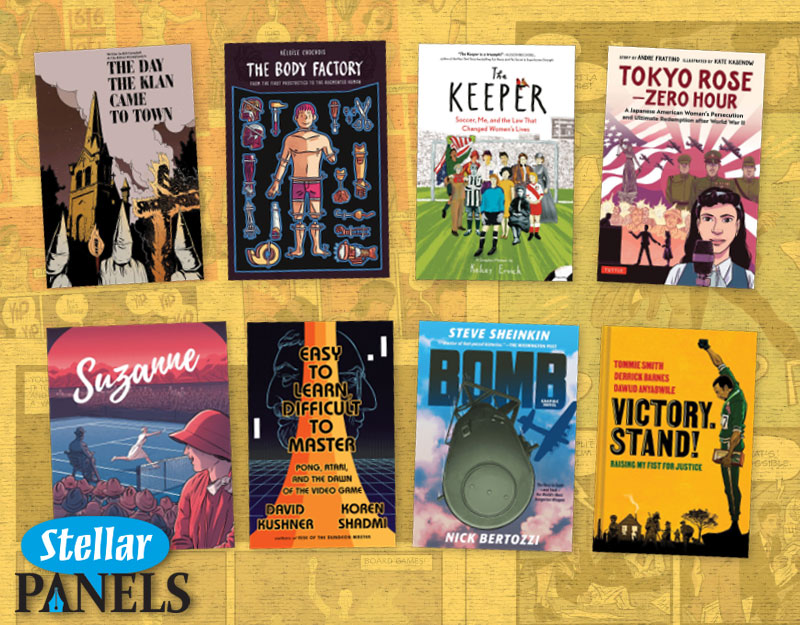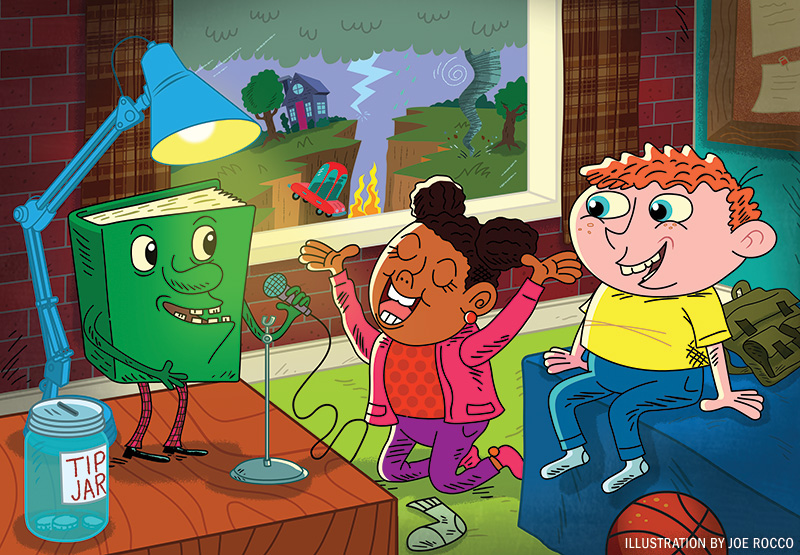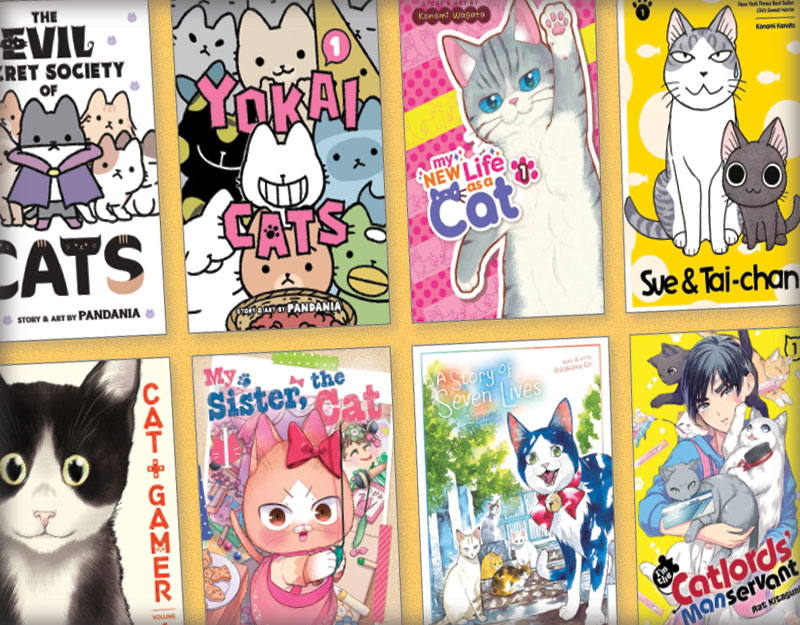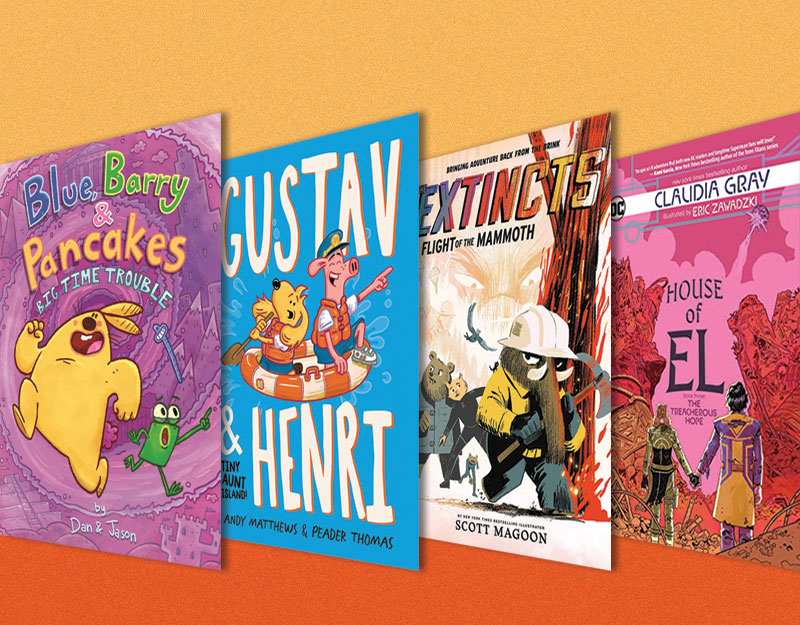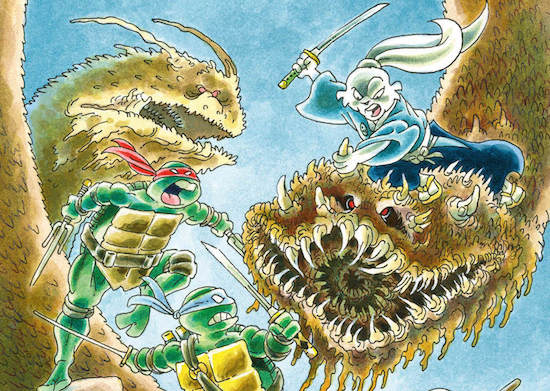
Review: ‘Usagi Yojimbo/Teenage Mutant Ninja Turtles: The Complete Collection’
Usagi Yojimbo/Teenage Mutant Ninja Turtles: The Complete Collection
Writer/artists: Stan Sakai and Peter Laird
Dark Horse Books; $17.99
 Last year IDW, the publisher that currently holds the license to publish comics starring Kevin Eastman and Peter Laird’s Teenage Mutant Ninja Turtles characters, enlisted Stan Sakai to create a brand-new, full-color crossover between the TMNT and Sakai’s own Usagi Yojimbo character. It was the latest in a long line of meetings between the ninja turtles and the samurai rabbit. Exactly how long? This new hardcover collection of every single one of their comic crossovers provides the answer: Five stories over 31 years.
Last year IDW, the publisher that currently holds the license to publish comics starring Kevin Eastman and Peter Laird’s Teenage Mutant Ninja Turtles characters, enlisted Stan Sakai to create a brand-new, full-color crossover between the TMNT and Sakai’s own Usagi Yojimbo character. It was the latest in a long line of meetings between the ninja turtles and the samurai rabbit. Exactly how long? This new hardcover collection of every single one of their comic crossovers provides the answer: Five stories over 31 years.
On paper, the characters bear much in common, being anthropomorphic animals whose seriocomic adventures are inspired to a greater or lesser degree by Japanese history and culture (for the turtles, it was definitely a lesser degree), and who originally appeared in early 1980s, black-and-white, small-run comics. They had still more in common behind the scenes, as Sakai and Eastman and Laird were fans of one another’s work, and they occupied similar space in the comics scene of the time (Eastman and Laird even published Usagi Yojimbo for a time through their Mirage Studios company).
ADVERTISEMENT
ADVERTISEMENT
Aside from some early fan art Sakai sent the Turtles guys, the first crossover was 1987’s “Turtle Soup and Rabbit Stew,” which, like all but one of the stories in this trade, is written, drawn and lettered by Sakai. Despite the similarities between the two milieus, there are somewhat challenging differences, too. The turtles are, as the name states, mutants, and they are meant to be read as literal turtle-men in a more-or-less realistic, modern version of New York City. Usagi, however, is a rabbit in the same way that Donald Duck is a duck in Disney comics; that is, he’s a human being drawn as an anthropomorphic animal, and his world is a faithfully recreated feudal Japan…in which all of the humans are drawn as one kind of animal or another.
Sakai bridged the gap in this first story in a way that befits the loose, anything-goes style of the early ninja turtles comics: Leonardo simply randomly appears in Usagi’s Japan, and randomly disappears near the end of the six-page story. Between his appearance and disappearance, he fights a band of samurai, Usagi fights a band of ninja and the two heroes briefly cross swords.
It’s much the same in Sakai’s next crossover, the 10-page, 1989 short “The Treaty.” This time, Leonardo is running across the rooftops of New York, bringing a pizza back to his brothers, when he is randomly returned to Usagi’s Japan for another adventure. This time, the pair spend more time together in conversation, and there’s a bit more of a plot. When Leonardo returns, the other Turtles don’t believe his story of a sword-wielding rabbit. This is the first time we get to see Sakai draw the other Turtles, as well as the sole time we see his version of April O’Neil (human beings are, in general, something of a rarity for the master cartoonist).
Between these two stories is a 1988 Peter Laird story, “The Crossing.” A riff on a Robin Hood story, this is basically a rematch bout between Leonardo and Usagi, notable for how unusual it is to see anyone other than Sakai draw Usagi (Laird’s is a much more realistic design, in which the character resembles a three-dimensional animal man more than a cartoon character).
Then there are the two longer stories, featuring all four turtles journeying to Usagi’s world. The first of these is the three-part “Shades of Green” story from 1993, which filled the first three issues of the Mirage-published Usagi Yojimbo. A sorcerer who resembles the Turtles’ Master Splinter plucks four turtles from a river, performs a magical rite, and the turtles magically transform into the Teenage Mutant Ninja Turtles, summoned through time and space to aid the sorcerer, Usagi and Gen.
ADVERTISEMENT
ADVERTISEMENT
That is followed in the collection by the 2017 IDW crossover, “Namazu,” which uses the same method of summoning the Turltes into a Usagi story as “Shades of Green” (This time the ninja turtles who arrive are a different quartet though, owing to the fact that this is the first and only crossover with the IDW versions, whereas it was the Mirage versions who had previously met Usagi).
There’s an additional 70 pages or so left in the collection, however, and these are filled with some process work of Sakai’s from “Namazu,” plus dozens of pin-ups and sketches of the two characters, and a rather wide variety of covers, including Eastman’s variant covers for “Namazu,” so that, in addition to all those pages of Sakai’s TMNT, we get to see both Laird and Eastman’s version of Usagi.
The Teenage Mutant Ninja Turtles are among the most successful and famous comic book characters ever created, and Sakai’s Usagi Yojimbo has been able to ride their star to a certain degree, thanks not only to these crossovers, but even more so to the character’s brief appearances in various TMNT cartoons and toy lines. In a perfect world, Usagi Yojimbo would be every bit as famous and as well-read as the Turtles are, though. The Turtles comics vary widely in quality from comic to comic and creator to creator, whereas Sakai has been personally creating Usagi Yojimbo for almost 35 years now, and the quality has been completely consistent that entire time.
Well, that’s not quite true; it’s actually been getting gradually better, issue by issue and year by year. This collection, with stories spaced years apart, actually demonstrates how much Sakai’s style has sharpened over the years. It’s a comic that every comics reader should at least sample, and Sakai’s work deserves to be on every library’s shelves.
Usagi Yojimbo/Teenage Mutant Ninja Turtles makes a great opening case for why exactly that is.
Filed under: Reviews
About J. Caleb Mozzocco
J. Caleb Mozzocco is a way-too-busy freelance writer who has written about comics for online and print venues for a rather long time now. He currently contributes to Comic Book Resources' Robot 6 blog and ComicsAlliance, and maintains his own daily-ish blog at EveryDayIsLikeWednesday.blogspot.com. He lives in northeast Ohio, where he works as a circulation clerk at a public library by day.
ADVERTISEMENT
ADVERTISEMENT
SLJ Blog Network
Happy Poem in Your Pocket Day!
This Q&A is Going Exactly As Planned: A Talk with Tao Nyeu About Her Latest Book
Parsing Religion in Public Schools
Environmental Mystery for Middle Grade Readers, a guest post by Rae Chalmers
ADVERTISEMENT

